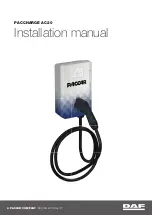
this defeats the
purpose of the ABS. Let the ABS
work for you by always keeping firm,
steady pressure on the brake pedal
as you steer away from the hazard.
This is sometimes referred to as
You will feel a pulsation in the brake
pedal when the ABS activates, and
you may hear some noise. This is
normal; it is the ABS rapidly
pumping the brakes.
Activation varies with the amount of
traction your tires have. On dry
pavement, you will need to press on
the brake pedal very hard before you
activate the ABS. However, you may
feel the ABS activate immediately if
you are trying to stop on snow or ice.
such as trying to take a
corner too fast or making a sudden
lane change. Always drive at a safe,
prudent speed for the road and
weather conditions.
it
only helps with steering control
during braking. You should always
maintain a safe following distance
from other vehicles.
Always steer moderately
when you are braking hard. Severe
or sharp steering wheel movement
can still cause your car to veer into
oncoming traffic or off the road.
on loose or
uneven surfaces, such as gravel or
snow, than a car without anti-lock.
Slow down and allow a greater
distance between cars under those
conditions.
‘‘stomp and steer.’’
You should never pump the
brake pedal;
ABS will not prevent a skid that
results f rom changing direction
abruptly,
ABS does not reduce the time or
distance it takes to stop the car;
ABS cannot prevent a loss of
stability.
A car with ABS may require a
longer distance to stop
Important Saf ety Reminders
The Braking System
Driving
144
01/08/21 20:27:36 31S2A620_147
Main Menu
Table of Contents
▲
▼
















































